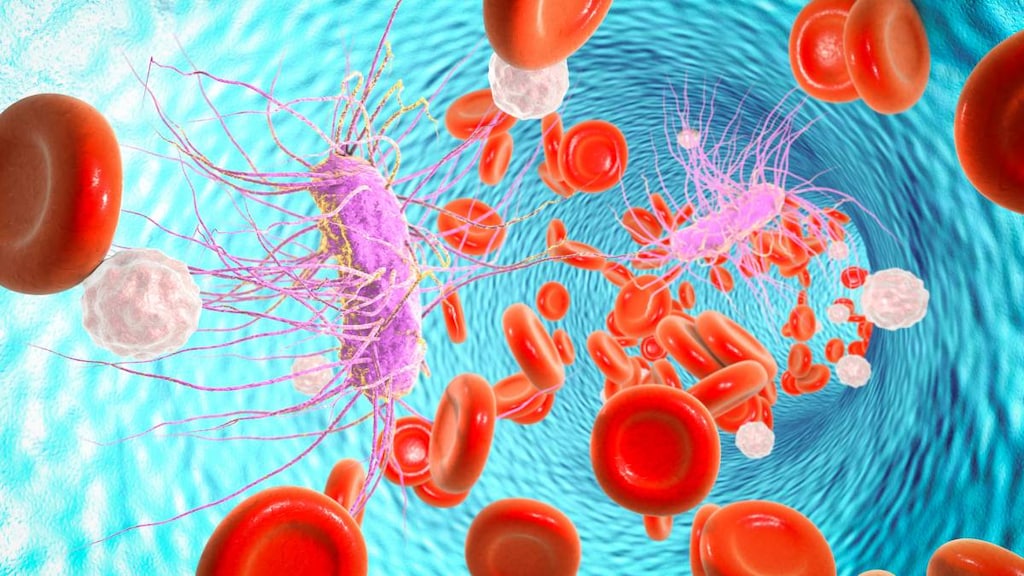
What is septicemia?
Septicemia is a life-threatening bloodstream infection that occurs when bacteria from another infection spread throughout the blood. It may also be called blood poisoning and is considered a medical emergency. Septicemia can rapidly progress to sepsis if left untreated.
What causes septicemia?
Septicemia occurs when a bacterial infection elsewhere in the body, enters the bloodstream and the bacteria rapidly multiply.
The most common infections associated with septicemia include:
- Abdominal infections (infections in the stomach or intestines)
- Kidney infections
- Lung infections (pneumonia)
- Skin infections
- Urinary tract infections.
Bacteria that are more likely to cause septicemia include Staphylococcus aureus, Escherichia coli and some types of Streptococcus. Sometimes the exact source of the infection cannot be determined.
People more at risk for septicemia include those:
- In hospital for another reason, such as surgery (more prone to drug-resistant septicemia)
- On mechanical ventilation
- Receiving chemotherapy or steroid injections
- With a urinary or intravenous catheter
- With chronic medical conditions, such as diabetes
- With immunosuppression
- With immune-suppressing conditions, such as cancer, HIV or leukemia
- With severe wounds or burns
- Very young (less than 1-year-old) or the very old (older than 65 years).
If left untreated, septicemia can become sepsis. This is a result of our immune system releasing many chemicals into the blood to fight the infection. These chemicals cause widespread inflammation which can lead to blood clots and a decrease in blood flow to limbs and internal organs, and potential organ failure. Sepsis may also cause a life-threatening drop in blood pressure, which is called septic shock. 28 to 50 percent of people who develop sepsis will die from it.
What are the symptoms of septicemia?
Because septicemia is the process of bacteria entering the bloodstream, symptoms are due to sepsis, which is our body’s overwhelming response to that infection. Symptoms usually come on extremely quickly and the person may look very unwell straight away.
Symptoms may include:
- Fever and chills
- Fast breathing
- Rapid heart rate
- Confusion or agitation
- Fatigue
- Nausea or vomiting
- A hemorrhagic rash (these are clusters of tiny blood spots that initially look like pinpricks on the skin but can progress to look like a bruise before merging to cause large areas of purple skin damage and discoloration)
- Reduced urination
- Reduced blood flow to the limbs causing cold hands and feet
- Sensitivity to light.
Treatment should be sought straight away if somebody is showing signs of sepsis.
How is Septicemia Treated?
Septicemia must be treated in a hospital. If it is left untreated, it can quickly progress to sepsis which can be fatal.
Treatment may include:
- Antibiotics
- Improving blood circulation
- Oxygen and breathing assistance
- Intravenous fluids
- Surgery
- Kidney dialysis.




